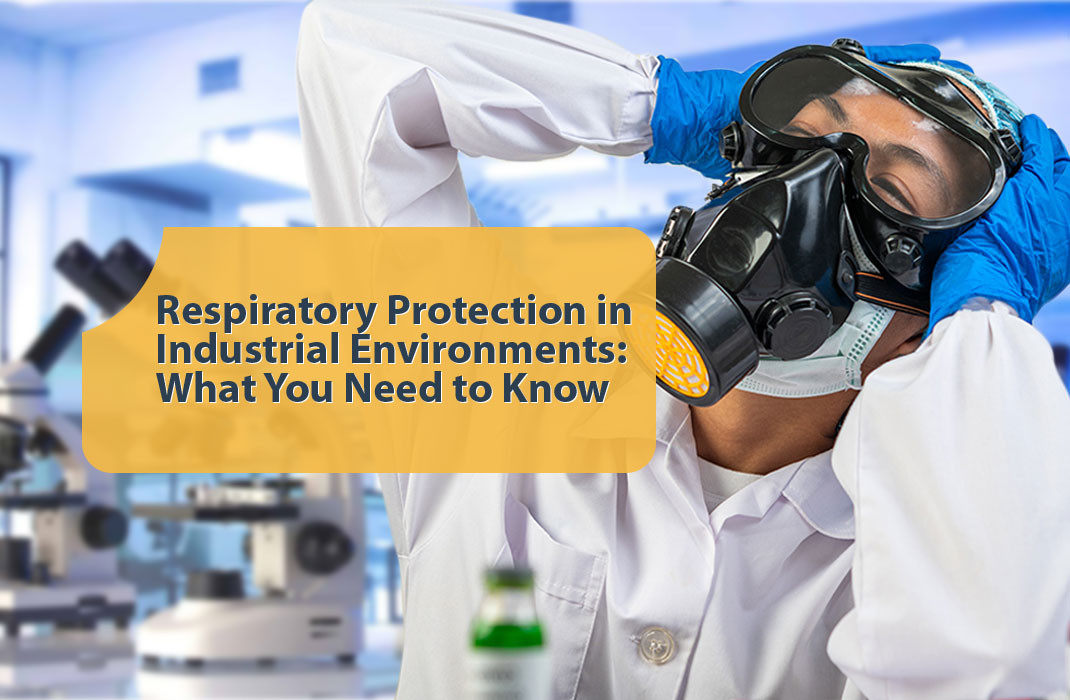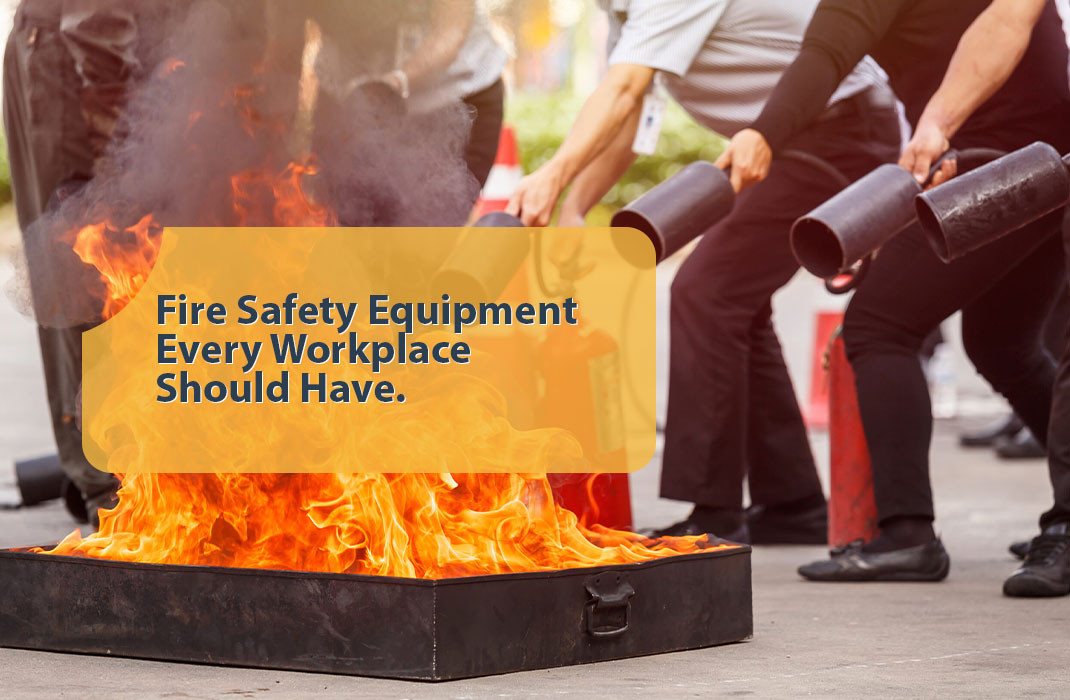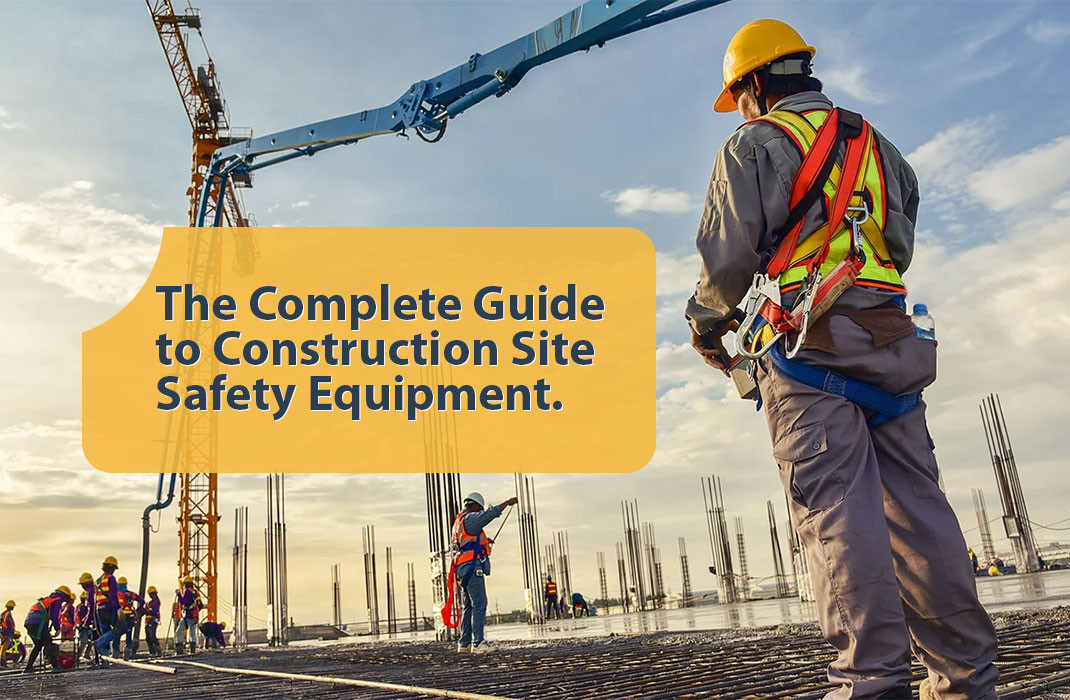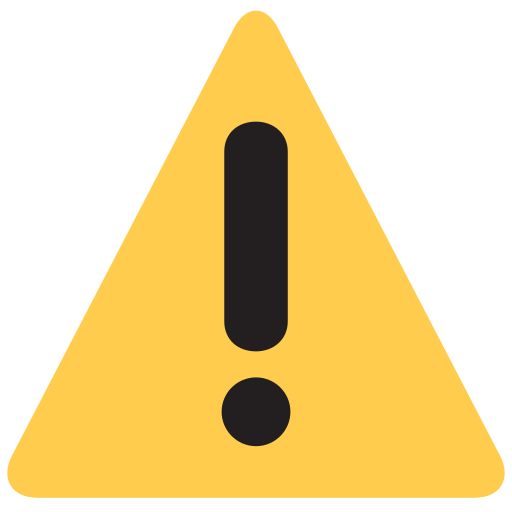Respiratory Protection in Industrial Environments: What You Need to Know

Understanding Industrial Respiratory Hazards
Industrial respiratory hazards encompass a broad spectrum of airborne contaminants that can enter the body through inhalation. These hazards vary significantly depending on the industry, processes involved, and materials handled. The severity of exposure can range from mild irritation to life-threatening conditions, making proper identification and protection crucial for worker safety.
Particulate hazards include dust, fumes, mists, and fibers generated by industrial processes. Mining operations produce silica dust, which can cause silicosis, a debilitating lung disease. Welding generates metal fumes that can lead to metal fume fever and other respiratory conditions. Asbestos fibers, still present in older industrial facilities, pose severe cancer risks.
Chemical vapors and gases present different challenges. Organic solvents used in manufacturing can cause central nervous system effects and organ damage. Hydrogen sulfide in oil and gas operations can be immediately fatal at high concentrations. Ammonia in refrigeration systems causes severe respiratory irritation and chemical burns.
Biological hazards, though less common in industrial settings, can occur in wastewater treatment, food processing, and biotechnology facilities. These include bacteria, viruses, and fungi that can cause respiratory infections and allergic reactions.
Types of Respiratory Protection Equipment
Filtering Facepiece Respirators
Filtering facepiece respirators, commonly known as disposable respirators, represent the most basic level of respiratory protection. These single-use devices filter airborne particles through their construction materials and are suitable for protection against non-oil aerosols at relatively low concentrations.
N95 respirators filter at least 95% of airborne particles and are widely used in industrial applications with moderate dust levels. N99 and N100 respirators provide higher filtration efficiency for environments with higher particulate concentrations. R-series respirators offer limited protection against oil aerosols, while P-series respirators provide comprehensive protection against all types of aerosols.
The effectiveness of filtering facepiece respirators depends heavily on proper fit. Poor fit allows contaminated air to bypass the filter media, significantly reducing protection levels. These respirators are cost-effective for short-term exposures but may not provide adequate protection for extended work periods or high-concentration environments.
Half-Face Respirators
Half-face respirators cover the nose and mouth while leaving the eyes exposed. They use replaceable cartridges or filters to remove specific contaminants from breathing air. This design provides better fit and seal than filtering facepiece respirators while offering protection against a wider range of hazards.
Particulate filters attach to half-face respirators for dust, fume, and mist protection. Chemical cartridges contain sorbent materials that remove specific gases and vapors from breathing air. Combination cartridges provide protection against both particulate and gas/vapor hazards.
Half-face respirators require regular maintenance, including cartridge replacement, cleaning, and inspection. They offer better protection factors than filtering facepiece respirators but require more training and maintenance. The reusable nature makes them cost-effective for regular use in industrial environments.
Full-Face Respirators
Full-face respirators provide comprehensive protection for the entire face, including eyes, nose, and mouth. They offer higher protection factors than half-face designs and protect against eye irritation from airborne chemicals. The larger sealing surface typically provides better fit and reduces face seal leakage.
Full-face respirators use the same cartridge and filter systems as half-face models but provide additional eye protection. They're essential in environments where chemical vapors or particulates can cause eye damage or impair vision. The integrated eye protection eliminates the need for separate safety glasses in many applications.
Communication can be challenging with full-face respirators, though many models include speaking diaphragms or electronic communication systems. The larger size and weight may cause fatigue during extended use, but the superior protection often justifies these limitations in hazardous environments.
Powered Air-Purifying Respirators (PAPRs)
Powered air-purifying respirators use battery-powered blowers to draw air through filters and deliver clean air to the wearer's breathing zone. This positive pressure design provides superior protection and reduces breathing resistance compared to negative-pressure respirators.
PAPRs accommodate various headgear styles, including hoods, helmets, and loose-fitting facepieces. This flexibility allows protection for workers with facial hair or other conditions that prevent proper fit with tight-fitting respirators. The positive pressure also provides cooling air flow, improving comfort during extended use.
Battery life and maintenance requirements are important considerations with PAPRs. Regular charging, filter replacement, and equipment cleaning are essential for reliable operation. Despite higher initial costs and maintenance requirements, PAPRs often provide the best combination of protection and comfort for extended industrial use.
Supplied-Air Respirators
Supplied-air respirators deliver breathing air from an uncontaminated source through airline connections or compressed air tanks. They provide the highest level of respiratory protection and are essential for environments with immediately dangerous to life or health (IDLH) concentrations or oxygen deficiency.
Airline respirators connect to stationary compressed air systems through lightweight hoses. They provide unlimited operating time but restrict worker mobility. Self-contained breathing apparatus (SCBA) units carry compressed air supplies, providing complete mobility but limited operating time.
Supplied-air systems require high-quality breathing air that meets specific purity standards. Air quality testing, compressor maintenance, and proper filtration are critical for safe operation. Emergency escape provisions are essential when using supplied-air systems in hazardous environments.
Hazard Assessment and Respirator Selection
Effective respiratory protection begins with comprehensive hazard assessment. Industrial facilities must identify all potential respiratory hazards, determine exposure levels, and evaluate the adequacy of engineering controls. This assessment forms the foundation for appropriate respirator selection and program development.
Air monitoring provides quantitative data on contaminant concentrations and helps establish exposure patterns. Personal sampling devices measure individual worker exposures, while area monitoring identifies general contamination levels. Regular monitoring verifies the continued effectiveness of control measures and identifies changing conditions.
Respirator selection involves matching equipment capabilities to specific hazards and exposure levels. Protection factors indicate the level of protection provided by different respirator types. Assigned protection factors, established by regulatory agencies, provide conservative estimates for equipment selection.
Physical and physiological factors affect respirator selection and use. Workers with respiratory conditions, heart problems, or claustrophobia may require medical evaluation before using respiratory protection. Facial hair, corrective lenses, and physical disabilities can impact respirator fit and selection.
Fit Testing and Training
Proper fit is crucial for respiratory protection effectiveness. Quantitative fit testing uses sophisticated equipment to measure actual leakage around the face seal, providing precise fit factors for individual workers. Qualitative fit testing uses sensory detection of test agents to verify adequate fit.
Initial fit testing establishes baseline protection levels and identifies suitable respirator models for individual workers. Periodic fit testing verifies continued adequate fit and identifies changes that might affect protection. Annual fit testing is typically required, with additional testing after significant weight changes, dental work, or facial injuries.
Training programs ensure workers understand respiratory hazards, proper equipment use, and maintenance requirements. Initial training covers hazard recognition, equipment selection, donning and doffing procedures, and maintenance requirements. Refresher training reinforces proper practices and addresses new hazards or equipment.
Hands-on training with actual equipment is essential for developing proper techniques. Workers must practice donning and doffing procedures, perform user seal checks, and demonstrate proper maintenance procedures. Emergency procedures, including equipment failure and escape protocols, require special attention.
Industrial-Specific Applications
Mining Operations
Mining environments present unique respiratory challenges, including silica dust, coal dust, and diesel particulates. Underground operations may involve oxygen deficiency and toxic gases. Surface mining operations generate large amounts of respirable dust from drilling, blasting, and material handling.
Continuous personal dust monitors help miners track real-time exposures and adjust work practices accordingly. Filtering facepiece respirators provide basic protection for many mining tasks, while powered air-purifying respirators offer superior protection and comfort for extended underground work.
Emergency escape respirators are essential for underground mining operations. These devices provide temporary protection during evacuation from hazardous atmospheres. Self-rescue devices must be immediately available and regularly maintained to ensure reliability when needed.
Oil and Gas Industry
Oil and gas operations involve exposure to hydrogen sulfide, benzene, and other toxic gases. Confined space entry and emergency response situations may require supplied-air protection. Offshore operations present additional challenges with saltwater corrosion and limited evacuation options.
Portable gas detection equipment works in conjunction with respiratory protection to provide early warning of hazardous conditions. Escape respirators designed for hydrogen sulfide exposure are standard equipment in many oil and gas operations. These devices provide temporary protection during evacuation from toxic atmospheres.
Hot work permits and confined space entry procedures often specify respiratory protection requirements. Supplied-air systems with emergency escape provisions are common for tank cleaning and maintenance operations. Regular equipment inspection and maintenance are critical in corrosive offshore environments.
Manufacturing Facilities
Manufacturing operations generate diverse respiratory hazards depending on materials and processes involved. Metal fabrication produces welding fumes and grinding dust. Chemical processing creates vapors and mists. Paint spraying operations generate both particulate and vapor hazards.
Respiratory protection selection varies significantly across manufacturing operations. Welders typically use supplied-air systems or PAPRs to avoid heat stress and provide adequate protection against metal fumes. Paint spraying operations require protection against both particulates and organic vapors.
Local exhaust ventilation systems work in conjunction with respiratory protection to control airborne contaminants. Regular maintenance of both ventilation systems and respiratory equipment ensures continued effectiveness. Training programs must address the specific hazards and protection requirements for each manufacturing process.
Maintenance and Care
Proper maintenance extends equipment life and ensures reliable protection. Daily inspection procedures identify damage, contamination, or wear that could compromise protection. Workers must be trained to recognize signs that require immediate equipment removal from service.
Cleaning and disinfection procedures prevent contamination buildup and reduce disease transmission risks. Manufacturer recommendations specify appropriate cleaning agents and procedures for different respirator types. Shared equipment requires special attention to prevent cross-contamination between users.
Storage conditions affect equipment longevity and performance. Respirators must be stored in clean, dry locations away from contamination and extreme temperatures. Proper storage containers protect equipment from damage and contamination during transport and storage.
Regulatory Compliance and Standards
Respiratory protection programs must comply with applicable occupational health and safety regulations. These requirements specify minimum program elements, including hazard assessment, equipment selection, training, fit testing, and medical evaluation. Regular program audits verify compliance and identify improvement opportunities.
Equipment certification ensures respirators meet minimum performance standards. Certification marks indicate compliance with specific testing protocols and performance criteria. Only certified equipment should be used for occupational respiratory protection.
Documentation requirements include training records, fit test results, medical evaluations, and equipment maintenance logs. These records demonstrate program compliance and provide valuable information for program evaluation and improvement. Electronic record-keeping systems can streamline documentation and reporting requirements.
Emerging Technologies and Future Trends
Advanced filtration technologies continue to improve respiratory protection capabilities. Nanofiber filters provide higher efficiency with lower breathing resistance. Electrostatic charge enhancement improves particle capture efficiency. Smart filters can indicate remaining service life and exposure levels.
Integrated communication systems address one of the major limitations of respiratory protection equipment. Bluetooth-enabled devices allow clear communication while maintaining protection. Heads-up displays can provide real-time exposure data and equipment status information.
Artificial intelligence and machine learning applications are emerging in respiratory protection. Smart systems can analyze exposure patterns, predict equipment maintenance needs, and optimize protection strategies. Wearable sensors provide real-time physiological monitoring to ensure worker safety during respirator use.
Cost-Benefit Analysis
Effective respiratory protection requires significant investment in equipment, training, and maintenance. However, the costs of inadequate protection far exceed program expenses. Occupational lung diseases result in substantial medical costs, lost productivity, and legal liability.
Life cycle cost analysis considers all program expenses, including equipment purchase, maintenance, training, and administration costs. This comprehensive approach helps identify the most cost-effective protection strategies. Higher initial equipment costs may be justified by longer service life or superior protection capabilities.
Return on investment calculations demonstrate the financial benefits of effective respiratory protection programs. Reduced medical costs, lower insurance premiums, decreased absenteeism, and improved productivity provide measurable returns. These benefits often justify program investments within short timeframes.
Conclusion
Respiratory protection in industrial environments requires comprehensive understanding of hazards, equipment capabilities, and program requirements. Success depends on proper hazard assessment, appropriate equipment selection, thorough training, and consistent program implementation. The complexity of industrial respiratory hazards demands expert guidance and high-quality equipment to ensure worker protection.
At Ultimate General Trading, we understand the critical importance of respiratory protection in Tanzania's diverse industrial sectors. Our comprehensive range of respiratory protection equipment, from basic filtering facepiece respirators to sophisticated supplied-air systems, helps industrial facilities maintain the highest health and safety standards.
The investment in proper respiratory protection pays dividends through reduced health care costs, improved worker productivity, and regulatory compliance. Most importantly, effective respiratory protection programs protect the most valuable asset of any industrial operation—the health and well-being of workers who drive industrial success across East Africa.
Remember that respiratory protection is just one component of comprehensive industrial hygiene programs. Engineering controls, administrative procedures, and personal protective equipment work together to create safe industrial work environments. Partner with experienced safety professionals to develop and implement respiratory protection programs that meet your specific industrial challenges and regulatory requirements.
Recent Posts
Respiratory Protection in Industrial Environments: What You Need to Know
About Us
Ultimate General Trading is a leading supplier based in Dar es Salaam, Tanzania, specializing in safety gear, personal protective equipment (PPE), uniforms, workwear, security wear, and accessories. We serve a wide range of industries including oil, gas, mining, and manufacturing.


